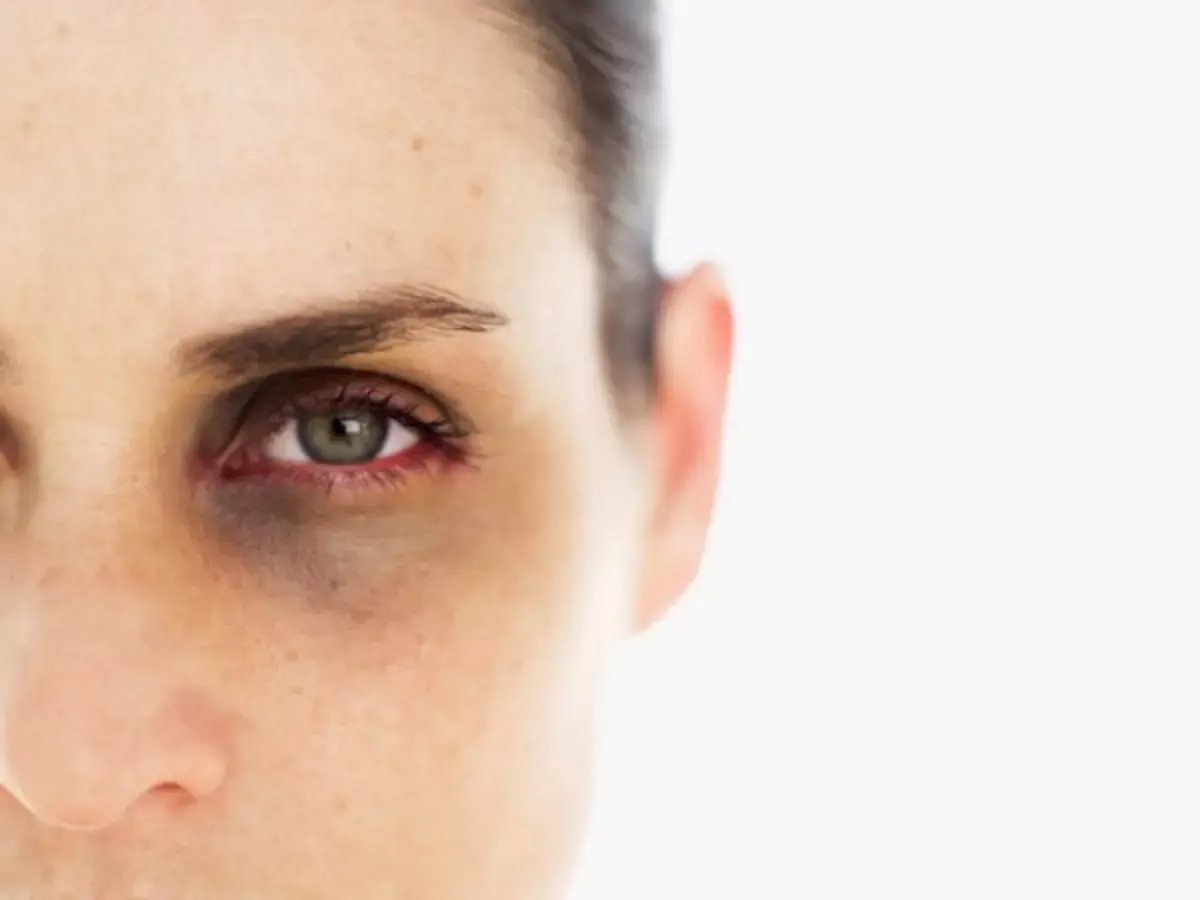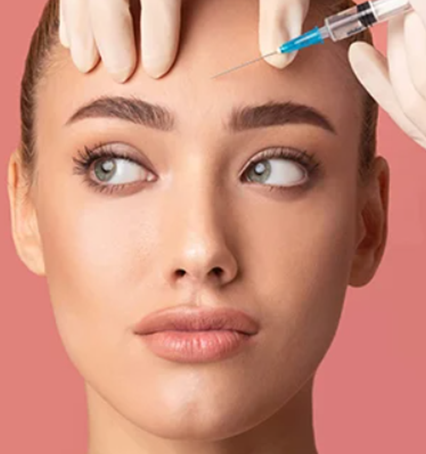What are Dark Circles Under Your Eyes?
Exploring the Reasons Behind Under-Eye Dark Circles
Dark circles under the eyes refer to the discoloration or pigmentation that appears in the area beneath the lower eyelids. They often present as a dark or bluish tint, giving the impression of shadows or circles. Dark circles can affect both men and women and are a common concern for many individuals.

Who Do Dark Circles Under the Eyes Affect?
Dark circles under the eyes can affect various individuals, regardless of age, gender, or ethnicity. Here are some groups of people who may be more prone to experiencing dark circles:
- Lack of sleep or poor sleep quality
- Genetic predisposition
- Aging
- Allergies and nasal congestion
- Sun exposure
- Skin pigmentation
- Dehydration and poor nutrition

What Causes Dark Circles Under Your Eyes?
There are several factors that can contribute to the development of dark circles under the eyes:
1. Lack of sleep: Insufficient sleep or poor quality sleep can cause blood vessels beneath the skin to dilate, resulting in a darker appearance.
2. Thin skin: The skin around the eyes is delicate and thin. When blood vessels beneath the skin show through, they can create a darker appearance.
3. Pigmentation irregularities: Some individuals have a genetic predisposition to increased pigmentation under the eyes, which can lead to the appearance of dark circles.
4. Age-related changes: As we age, the skin becomes thinner, collagen production decreases, and fat can diminish in the under-eye area. These factors can make the blood vessels and underlying structures more visible, resulting in the appearance of dark circles.
5. Allergies and nasal congestion: Conditions like allergies or nasal congestion can cause blood vessels to dilate, leading to increased blood flow and darkening of the under-eye area.
6. Dehydration: When the body is dehydrated, the skin can become dull and appear darker, including the under-eye area.
7. Lifestyle factors: Certain lifestyle habits, such as excessive sun exposure, smoking, or excessive alcohol consumption, can contribute to the development of dark circles.
While dark circles under the eyes are generally harmless and do not indicate a serious medical condition, they can be bothersome for cosmetic reasons. Some measures to reduce the appearance of dark circles include getting adequate sleep, managing allergies or congestion, protecting the skin from sun damage, maintaining proper hydration, and using topical creams or serums specifically designed for under-eye care. In severe cases, cosmetic procedures like laser therapy, chemical peels, or dermal fillers may be considered. It is advisable to consult a dermatologist or healthcare professional for a proper diagnosis and appropriate treatment options tailored to your specific needs.
Our mission is to create a world where every investment in modern beauty is Worth It.
Let's keep in touch
Get updates of the treatments you are interested
What Can I Do at Home to Treat Dark Circles Under My Eyes?
Dark circles under the eyes can have various causes, such as genetics, lack of sleep, stress, allergies, or aging. While there is no guaranteed cure for dark circles, you can try several remedies at home to help reduce their appearance. Here are some suggestions:
- Get enough sleep: Lack of sleep can contribute to the appearance of dark circles. Aim for 7-9 hours of quality sleep each night.
- Use a cold compress: Applying a cold compress, such as a chilled spoon or a cold tea bag, can help constrict blood vessels and reduce puffiness and discoloration.
- Apply cucumber slices or chilled potato slices: These natural remedies have a cooling effect and can help reduce dark circles. Place thin slices over your closed eyelids for 10-15 minutes.
- Use a good eye cream: Look for an eye cream that contains ingredients like vitamin C, retinol, hyaluronic acid, or caffeine. These ingredients can help improve the appearance of dark circles and provide hydration to the delicate skin around the eyes.
- Apply a moisturizer: Keeping the under-eye area well-moisturized can make the skin appear smoother and reduce the appearance of dark circles. Choose a gentle, fragrance-free moisturizer and apply it daily.
- Protect your eyes from the sun: Excessive sun exposure can worsen dark circles. Wear sunglasses and apply sunscreen around the eyes to protect the skin.
- Stay hydrated: Drink an adequate amount of water throughout the day to keep your body and skin hydrated.
- Manage allergies: Allergies can contribute to dark circles. Identify and manage any allergies you may have by avoiding triggers and taking appropriate medications as recommended by a healthcare professional.
- Reduce salt intake: Consuming excessive salt can cause fluid retention, which can lead to puffiness and worsen the appearance of dark circles. Limit your salt intake and avoid processed foods that are high in sodium.
- Adopt a healthy lifestyle: Maintain a balanced diet, exercise regularly, manage stress, and avoid smoking and excessive alcohol consumption. These lifestyle factors can contribute to overall skin health.
What Medical Treatment Options are Available to Treat Dark Circles Under the Eyes?
Treatment options for dark circles under the eyes depend on the underlying cause. Here are some common medical treatment options:
1. Topical Creams: Certain topical creams and ointments containing ingredients like retinol, vitamin C, hydroquinone, kojic acid, or niacinamide may help to reduce the appearance of dark circles by improving skin pigmentation and promoting collagen production.
2. Chemical Peels: Dermatologists may recommend chemical peels to treat dark circles caused by hyperpigmentation. Chemical peels involve applying a solution to the skin that exfoliates the outer layers, revealing newer, brighter skin underneath.
3. Injectable Fillers: In some cases, dark circles may be caused by a loss of volume under the eyes, creating a hollow appearance. Injecting hyaluronic acid fillers can help plump up the area and reduce the appearance of dark circles.
4. Laser Therapy: Laser treatments, such as fractional laser resurfacing or intense pulsed light (IPL) therapy, can be used to target dark pigmentation and stimulate collagen production, leading to improved skin tone and texture.
5. Platelet-Rich Plasma (PRP) Therapy: PRP therapy involves injecting platelet-rich plasma derived from your own blood into the under-eye area. It can help improve skin texture, stimulate collagen production, and reduce dark circles.
6. Surgical Options: In cases where dark circles are caused by prominent blood vessels or excess fat deposits under the eyes, surgical procedures like blepharoplasty (eyelid surgery) may be considered. These procedures aim to remove or reposition excess fat and tighten the skin.
Our mission is to create a world where every investment in modern beauty is Worth It.
Let's keep in touch
Get updates of the treatments you are interested
How Can Dark Circles Under My Eyes be Prevented?
- Get enough sleep: Aim for 7-9 hours of quality sleep each night. Lack of sleep can make the skin appear dull and pale, emphasizing the appearance of dark circles.
- Manage allergies: Allergies can cause under-eye puffiness and contribute to dark circles. Identify and manage your allergies by avoiding triggers, using allergy medications, and implementing measures to reduce exposure to allergens.
- Stay hydrated: Drink an adequate amount of water throughout the day to keep your body and skin hydrated. Proper hydration helps maintain healthy skin and can reduce the prominence of dark circles.
- Protect your skin from the sun: Apply sunscreen and wear sunglasses to protect the delicate skin around your eyes from harmful UV rays. Sun damage can cause pigmentation irregularities and worsen the appearance of dark circles.
- Use cold compresses: Apply a cold compress or chilled cucumber slices to your eyes for a few minutes. The cold temperature constricts blood vessels and reduces puffiness and discoloration
- Adopt a healthy lifestyle: Maintain a balanced diet rich in fruits, vegetables, and foods high in antioxidants. Avoid excessive alcohol consumption and smoking, as they can contribute to dark circles and skin aging.
- Reduce eye strain: Limit prolonged exposure to screens (such as computers, smartphones, and TVs) and take regular breaks to rest your eyes. Eye strain can lead to tired-looking eyes and exacerbate the appearance of dark circles.
- Use eye creams or serums: Look for eye creams or serums containing ingredients like vitamin C, vitamin K, retinol, peptides, hyaluronic acid, or caffeine. These can help improve the appearance of dark circles and provide hydration to the delicate skin.
- Practice good skincare: Cleanse your face thoroughly and remove all makeup before going to bed. Use a gentle, fragrance-free cleanser and moisturize the under-eye area with a suitable eye cream.
- Manage stress: Incorporate stress-reducing activities into your routine, such as exercise, meditation, deep breathing exercises, or hobbies that help you relax. Chronic stress can contribute to the development of dark circles.

Exploring the Reasons Behind Under-Eye Dark Circles
Dark circles under the eyes refer to the discoloration or pigmentation that appears in the area beneath the lower eyelids. They often present as a dark or bluish tint, giving the impression of shadows or circles. Dark circles can affect both men and women and are a common concern for many individuals.

Who Do Dark Circles Under the Eyes Affect?
Dark circles under the eyes can affect various individuals, regardless of age, gender, or ethnicity. Here are some groups of people who may be more prone to experiencing dark circles:
- Lack of sleep or poor sleep quality
- Genetic predisposition
- Aging
- Allergies and nasal congestion
- Sun exposure
- Skin pigmentation
- Dehydration and poor nutrition

What Causes Dark Circles Under Your Eyes?
There are several factors that can contribute to the development of dark circles under the eyes:
1. Lack of sleep: Insufficient sleep or poor quality sleep can cause blood vessels beneath the skin to dilate, resulting in a darker appearance.
2. Thin skin: The skin around the eyes is delicate and thin. When blood vessels beneath the skin show through, they can create a darker appearance.
3. Pigmentation irregularities: Some individuals have a genetic predisposition to increased pigmentation under the eyes, which can lead to the appearance of dark circles.
4. Age-related changes: As we age, the skin becomes thinner, collagen production decreases, and fat can diminish in the under-eye area. These factors can make the blood vessels and underlying structures more visible, resulting in the appearance of dark circles.
5. Allergies and nasal congestion: Conditions like allergies or nasal congestion can cause blood vessels to dilate, leading to increased blood flow and darkening of the under-eye area.
6. Dehydration: When the body is dehydrated, the skin can become dull and appear darker, including the under-eye area.
7. Lifestyle factors: Certain lifestyle habits, such as excessive sun exposure, smoking, or excessive alcohol consumption, can contribute to the development of dark circles.
While dark circles under the eyes are generally harmless and do not indicate a serious medical condition, they can be bothersome for cosmetic reasons. Some measures to reduce the appearance of dark circles include getting adequate sleep, managing allergies or congestion, protecting the skin from sun damage, maintaining proper hydration, and using topical creams or serums specifically designed for under-eye care. In severe cases, cosmetic procedures like laser therapy, chemical peels, or dermal fillers may be considered. It is advisable to consult a dermatologist or healthcare professional for a proper diagnosis and appropriate treatment options tailored to your specific needs.
Our mission is to create a world where every investment in modern beauty is Worth It.
Let's keep in touch
Get updates of the treatments you are interested
What Can I Do at Home to Treat Dark Circles Under My Eyes?
Dark circles under the eyes can have various causes, such as genetics, lack of sleep, stress, allergies, or aging. While there is no guaranteed cure for dark circles, you can try several remedies at home to help reduce their appearance. Here are some suggestions:
- Get enough sleep: Lack of sleep can contribute to the appearance of dark circles. Aim for 7-9 hours of quality sleep each night.
- Use a cold compress: Applying a cold compress, such as a chilled spoon or a cold tea bag, can help constrict blood vessels and reduce puffiness and discoloration.
- Apply cucumber slices or chilled potato slices: These natural remedies have a cooling effect and can help reduce dark circles. Place thin slices over your closed eyelids for 10-15 minutes.
- Use a good eye cream: Look for an eye cream that contains ingredients like vitamin C, retinol, hyaluronic acid, or caffeine. These ingredients can help improve the appearance of dark circles and provide hydration to the delicate skin around the eyes.
- Apply a moisturizer: Keeping the under-eye area well-moisturized can make the skin appear smoother and reduce the appearance of dark circles. Choose a gentle, fragrance-free moisturizer and apply it daily.
- Protect your eyes from the sun: Excessive sun exposure can worsen dark circles. Wear sunglasses and apply sunscreen around the eyes to protect the skin.
- Stay hydrated: Drink an adequate amount of water throughout the day to keep your body and skin hydrated.
- Manage allergies: Allergies can contribute to dark circles. Identify and manage any allergies you may have by avoiding triggers and taking appropriate medications as recommended by a healthcare professional.
- Reduce salt intake: Consuming excessive salt can cause fluid retention, which can lead to puffiness and worsen the appearance of dark circles. Limit your salt intake and avoid processed foods that are high in sodium.
- Adopt a healthy lifestyle: Maintain a balanced diet, exercise regularly, manage stress, and avoid smoking and excessive alcohol consumption. These lifestyle factors can contribute to overall skin health.
What Medical Treatment Options are Available to Treat Dark Circles Under the Eyes?
Treatment options for dark circles under the eyes depend on the underlying cause. Here are some common medical treatment options:
1. Topical Creams: Certain topical creams and ointments containing ingredients like retinol, vitamin C, hydroquinone, kojic acid, or niacinamide may help to reduce the appearance of dark circles by improving skin pigmentation and promoting collagen production.
2. Chemical Peels: Dermatologists may recommend chemical peels to treat dark circles caused by hyperpigmentation. Chemical peels involve applying a solution to the skin that exfoliates the outer layers, revealing newer, brighter skin underneath.
3. Injectable Fillers: In some cases, dark circles may be caused by a loss of volume under the eyes, creating a hollow appearance. Injecting hyaluronic acid fillers can help plump up the area and reduce the appearance of dark circles.
4. Laser Therapy: Laser treatments, such as fractional laser resurfacing or intense pulsed light (IPL) therapy, can be used to target dark pigmentation and stimulate collagen production, leading to improved skin tone and texture.
5. Platelet-Rich Plasma (PRP) Therapy: PRP therapy involves injecting platelet-rich plasma derived from your own blood into the under-eye area. It can help improve skin texture, stimulate collagen production, and reduce dark circles.
6. Surgical Options: In cases where dark circles are caused by prominent blood vessels or excess fat deposits under the eyes, surgical procedures like blepharoplasty (eyelid surgery) may be considered. These procedures aim to remove or reposition excess fat and tighten the skin.
Our mission is to create a world where every investment in modern beauty is Worth It.
Let's keep in touch
Get updates of the treatments you are interested
How Can Dark Circles Under My Eyes be Prevented?
- Get enough sleep: Aim for 7-9 hours of quality sleep each night. Lack of sleep can make the skin appear dull and pale, emphasizing the appearance of dark circles.
- Manage allergies: Allergies can cause under-eye puffiness and contribute to dark circles. Identify and manage your allergies by avoiding triggers, using allergy medications, and implementing measures to reduce exposure to allergens.
- Stay hydrated: Drink an adequate amount of water throughout the day to keep your body and skin hydrated. Proper hydration helps maintain healthy skin and can reduce the prominence of dark circles.
- Protect your skin from the sun: Apply sunscreen and wear sunglasses to protect the delicate skin around your eyes from harmful UV rays. Sun damage can cause pigmentation irregularities and worsen the appearance of dark circles.
- Use cold compresses: Apply a cold compress or chilled cucumber slices to your eyes for a few minutes. The cold temperature constricts blood vessels and reduces puffiness and discoloration
- Adopt a healthy lifestyle: Maintain a balanced diet rich in fruits, vegetables, and foods high in antioxidants. Avoid excessive alcohol consumption and smoking, as they can contribute to dark circles and skin aging.
- Reduce eye strain: Limit prolonged exposure to screens (such as computers, smartphones, and TVs) and take regular breaks to rest your eyes. Eye strain can lead to tired-looking eyes and exacerbate the appearance of dark circles.
- Use eye creams or serums: Look for eye creams or serums containing ingredients like vitamin C, vitamin K, retinol, peptides, hyaluronic acid, or caffeine. These can help improve the appearance of dark circles and provide hydration to the delicate skin.
- Practice good skincare: Cleanse your face thoroughly and remove all makeup before going to bed. Use a gentle, fragrance-free cleanser and moisturize the under-eye area with a suitable eye cream.
- Manage stress: Incorporate stress-reducing activities into your routine, such as exercise, meditation, deep breathing exercises, or hobbies that help you relax. Chronic stress can contribute to the development of dark circles.










